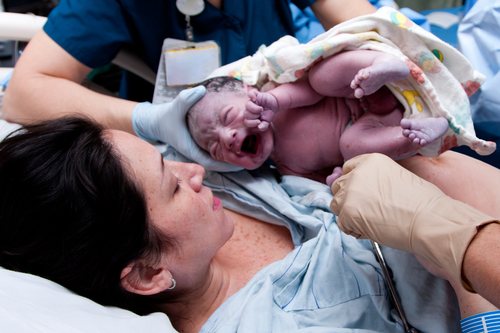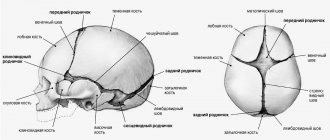What is supplementary feeding
Supplementary feeding is expressed milk (mother's or donor) and/or formula (breast milk substitutes), which are introduced to compensate for breast milk in case of shortage. Many people confuse supplementary feeding with complementary feeding, which is given to the child not as a forced measure, but to supplement breast milk with all the necessary substances in connection with the child reaching a certain age. In other words, a child needs supplementary feeding if necessary, but all children need complementary feeding.
Selecting formulas for supplementary feeding of newborns
The answer to the question of which formula is best to supplement largely depends on the age and health of the baby. Today, the children's food industry, in tandem with pediatricians, offers the following options for mixtures:
- adapted: their composition is as close as possible to breast milk. Such mixtures are well absorbed and do not cause problems with getting used to a new diet, therefore they are recommended for babies in the first months of life;
- partially adapted casein: you can supplement your baby with a mixture of this variety starting from 3 months. It is more satisfying and nutritious, although it is somewhat more difficult to digest, but the digestive system of an older baby is already fully prepared to accept such products;
- transitional: given to children aged about six months, whose body is almost ready for non-dairy complementary foods;
- medicinal: special formulations for allergy sufferers and premature babies, lactose-free, anti-reflux, fermented milk and others. It is recommended to supplement your baby with formulas of this type only after consulting a doctor.
Supplementary feeding of a newborn in the maternity hospital
After the birth of a child, in the first three days the mother secretes colostrum, the volume of which is only a few milliliters.
Due to its high calorie content and valuable biological properties, this is the irreplaceable food that a newborn needs and to which he is physiologically most adapted in the first days of his life. A small amount of food helps the baby to correctly master the techniques of sucking, swallowing and breathing during breastfeeding. After 2-3 days, the newborn loses weight in the amount of 5.5-6.6% of birth weight, but not due to lack of nutrition, but due to the child’s adaptation to living conditions that differ from the conditions of the prenatal period. All these features of the first days can confuse a young mother, causing her to doubt her ability to feed her child, and lead to the introduction of supplementary feeding. Therefore, it is important to understand when supplementary feeding in the maternity hospital is necessary and when it is not. In any case, the decision on supplementary feeding is made by the doctor, assessing each case individually after monitoring breastfeeding. No additional feeding is required.
- The child is sleepy. This is a normal occurrence after a baby wakes for the first time in its life. The next 10 hours include 1-2 periods of wakefulness with or without feeding. If the baby sleeps for a long time, it is better to wake him up by trying to breastfeed. Longer pauses between feedings require a larger volume of food for the baby, and this is problematic in the initial period of lactation. Therefore, it is better to try to feed more often than to give the baby supplementary food after a long sleep. The main rule in the first seven days: “The child is awake if he is hungry.”
- The child is healthy. Healthy, full-term infants with a bilirubin level of less than 18 mol/L after 72 hours of life, breastfeeding well, having regular bowel movements, and weight loss of less than 7%.
- Restless child. Even in case of very strong restlessness at night or many hours of wakefulness.
- The mother is tired or wants to sleep.
Absolute indications for prescribing supplementary feeding.
- Separation of child and mother due to maternal illness.
- The baby has diseases associated with the absorption of breast milk.
- The baby has developmental defects that prevent breastfeeding.
- Taking medications by the mother that are contraindicated during breastfeeding.
Relative indications for prescribing supplementary feeding
| Testimony from the child | Testimony from the mother |
| A decrease in blood glucose levels without obvious symptoms (hypoglycemia), confirmed by tests and remaining unchanged after breastfeeding | Insufficient amount of milk five days after birth, caused by the remnants of the placenta in the uterus, after removal of which, lactation returns to normal. |
| Significant dehydration (weight loss greater than 10%, high sodium levels in the blood, lethargy), despite proper breastfeeding. | Insufficient milk supply due to Sheehan's syndrome. |
| Weight loss of 8-10% in an infant due to delayed milk production in the mother after five days. | Insufficient milk production by the mammary glands due to their underdevelopment (primary hypoplasia). |
| Retention of stool or passage of meconium after five days. | Impaired milk production due to previous surgical operations on the breast or pathologies of the mammary glands. |
| The child receives little milk, despite the mother having enough milk. | Acute pain during feeding that does not disappear after attempts to eliminate it. |
| Neonatal jaundice associated with insufficient breast milk supply or breast milk jaundice (bilirubin level 20-25 mol/l). | |
| If necessary, additional administration of micronutrients (vitamins, minerals, amino acids). |
How to introduce supplementary feeding: methods and rules
This needs to be done very gradually. In the first days, the volume of the mixture should not exceed 30 mg and it can only be offered after breastfeeding. In this case, it is advisable to do the very first supplementary feeding of the child in a volume of 10 ml to see how the baby will react to the mixture. Perhaps the baby will eat even less than you prepared. In this case, the remainder of the diluted mixture should be disposed of, and a fresh one should be prepared for the next feeding. Over time, you will have to adjust the volume more than once, taking into account weight gain and the daily number of urinations of the child.
As a rule, the supplementary feeding system for a newborn is based on calculating the daily volume of food. For children from birth to 1.5 months, it should be one fifth of the body weight, for babies aged from one and a half to 4 months - one sixth of the current weight, for babies from 4 months to six months - about 1/8 of the weight. If this norm is not covered by breast milk, the remainder must be allocated for artificial supplementary feeding.
Very often, supplementary feeding is introduced in the maternity hospital, when the mother has not yet formed a full lactation. After a few days, the need for it disappears, but may return for the reasons stated above. It is advisable to supplement the infant with formula until six months, since at approximately this age non-dairy complementary foods are already introduced, which can quite cover the deficiency of mother’s milk.
Almost the main rule of supplementary feeding is to offer the child formula only during the daytime, from approximately 6 to 22 hours. At night, the baby should be fed exclusively with breast milk, even if the mother has to put him next to her in bed all night.
The second mandatory requirement is that you need to feed the baby with the mixture from a spoon or pipette, but in no case from a bottle with a nipple. The fact is that sucking the nipple and the breast have different mechanisms, and an “overtrained” baby may subsequently simply abandon the breast.
How to determine lack of breast milk
If in the case of absolute contraindications to supplementary feeding everything is clear, then in the case of relative contraindications the question arises about the amount of breast milk or colostrum that the child does not get. The first thing to do is make sure that there really is not enough power. Several methods are used for this:
- counting the amount of urine;
- counting the number of urinations;
- expected increase method;
- weighing before and after feeding;
- weekly increment method;
- "intuitive" method.
Read the article for more details about these methods.
Calculation of the amount of milk that a child should eat at one feeding can also be carried out using several methods, which can take into account not only the age, but also the weight and health status of the child. Read more about them in the article. The difference between the norm and the milk actually consumed by the child will be the amount of supplementary feeding that the child needs.
Choice of supplementary food
The best solution is to use expressed breast milk. At the beginning of lactation, it is better to express by hand, as it is more effective and can increase milk production. Read the article about the rules for expressing milk. Fortifiers will help to additionally enrich breast milk with useful components for premature and low birth weight babies.
The situation is more complicated with colostrum, which is secreted very little and is difficult to collect. In this case, it is optimal to use pasteurized donor milk.
Among artificial formulas, the best ones for supplementary feeding are those based on protein hydrolysates, as they reduce the risk of allergic reactions and bilirubin levels.
Complementary feeding and supplementary feeding - how not to get confused
Supplementary feeding is additional nutrition that is given to a baby during the first 5 months of life due to a lack of breast milk from the mother. Most often this is an adapted milk formula. That is, if a woman’s lactation was normal, and the baby was full of mother’s milk, then supplemental formula would not be needed. Adapted formulas are made as similar in composition and calorie content as possible to breast milk, so they do not play any additional function. If the mother can increase lactation, she will stop giving the baby a bottle without any negative consequences for his health. That is, supplementary feeding is given to children who are breast-fed or mixed-fed instead of breast milk.
Complementary feeding is a new type of food that differs from milk or formula in composition, taste, smell, consistency, and calorie content. It begins to be given to all babies with any type of feeding (natural, artificial, mixed) upon reaching a certain age or on the advice of a doctor. At the same time, it does not matter how much milk is in the mother’s breast: it is it (or an adapted mixture) that is inexorably gradually replaced by complementary foods. Will the introduction of complementary foods be different for natural and artificial babies, see here.
Supplementary feeding methods
There are several methods of supplementary feeding, each of which has its own advantages and disadvantages. The choice of one method or another depends on many factors, but in any case, the key to the success of their use is the patience and determination of the mother.
bottle
Advantages: Requires minimal effort and training.
Disadvantages: There is a risk of breast refusal.
To reduce the risk of breast refusal and improper latching on the breast by the child, leading to cracked nipples, you must:
- Choose the right bottle and pacifier. The bottle should be straight in shape without narrowing in the middle. The nipple should not have a wide base, as this causes the baby to squeeze his gums. The shape of the nipple should be round, as it is closer to the shape of the mother's nipple; the material of the nipple should be as soft as possible, otherwise orthodontic problems may occur. The hole in the nipple is made small so that the sucking process lasts 15-20 minutes.
- Correct feeding technique. If possible, give the baby the breast first and then the bottle. Place the baby on your lap, holding your hand and lifting the upper body. The bottle is held horizontally, and the nipple is placed in the baby's wide open mouth, almost up to the ring of the bottle. When everything is ready, the top edge of the bottle is raised so that air does not accumulate in the nipple. As the bottle is emptied, the baby is tilted back to completely empty the bottle.
A syringe without a needle or an extended syringe
Advantages: inexpensive, can be used once.
Disadvantages: the volume of the syringe is insufficient for older children, so supplementary feeding takes a lot of time. There is a danger of getting used to sucking a syringe instead of a breast.
For feeding, it is better to take a 5-10 ml syringe. The principle of milk supply is the same as for injections - when you gently press the piston, milk flows out of the syringe. The needle can be used to draw milk from a container with a narrow neck.
Methods of using a syringe can be different:
- The child sucks the syringe through which milk is injected;
- The milk flows through a tube at the end of the syringe into the corner of the baby's mouth.
- The baby sucks the mother's finger with the pad facing upward, and milk is injected with a syringe into the corner of the mouth.
- Milk enters the corner of the baby's mouth through a syringe with a tube directly during breastfeeding.
You can buy a syringe with a tube at a pharmacy or make it yourself. The pharmacy sells a “long cannula” syringe that is used by dentists. You can make it yourself by attaching a nasogastric tube or a venous catheter purchased at a pharmacy to a regular syringe.
Tea spoon
Advantages: does not require material costs. No interference with breastfeeding, as the spoon does not satisfy the need for sucking. The spoon can be used if the baby has a runny nose, since the sucking process is difficult at this time.
Disadvantages: its use requires skill, since at first most of the milk will spill past.
Usage. When the child opens his mouth, with a quick and confident movement, slightly tilt the spoon and pour its contents onto the middle part of the child’s tongue. You can also try pouring milk into your cheek. According to reviews from mothers who use this method of supplementary feeding, it only takes 2-3 days to learn how to use it effectively.
Soft spoon Medela
Advantages: it is more convenient to use than a teaspoon, since you do not have to scoop milk out of the container every time. It is one of the simplest and most effective supplementary feeding methods.
Disadvantages: relatively high price of the device.
Usage. It is a soft silicone spoon combined with a bottle. When you press on the protrusions located in front of the spoon, milk begins to flow into it. This way you can easily dose the amount of food. At the same time, there is a possibility that if a child does not like a teaspoon, then a soft one will not suit him.
Find out the price of a Medela soft spoon in the Obstetrics online store
Cup
Benefits: Easy to handle between feedings (Medela offers sterile cups with rounded edges and a scale for convenience). Feeding takes even less time than bottle feeding. Due to the fact that no air is swallowed while using the cup, the number of regurgitations and colics is reduced. Weight gain is greater, and the tongue and jaws learn to work correctly.
Disadvantages: cannot be used in newborns with a weak swallowing reflex. Just like using a spoon, it may take some time to adjust.
Any cup will do, but it is better with thin walls (coffee cup, shot glass). According to WHO, all babies, even premature babies, can be cup fed. Premature babies lap up the milk, while full-term babies sip.
Important! Supplemental feeding from a cup is optimal if the baby has not yet taken the breast. Otherwise, it is better to use other methods of supplementation.
Usage.
- Place the child upright or semi-sitting on your lap, supporting the head with your hand, which also serves as support for the child’s shoulders and neck.
- Using a light touch, place the edge of the cup on your child's bottom lip.
- Tilt the cup so that the milk touches the baby's lips. The baby will begin to lap or lightly sip the milk.
- The level of liquid in the cup should remain the same so that the child does not stop. To do this, you need to very smoothly gradually tilt the cup.
Attention! Never pour milk down your child’s throat! Let him control the slurping and swallowing.
Haberman's sippy cup
Advantages: after using the sippy cup, breast refusal does not occur.
A special system allows you to regulate the flow of milk, reducing the risk of swallowing air. Disadvantages: high price.
The main purpose of this sippy cup is to feed children who are unable to create a vacuum when sucking due to cleft lip and palate, Pierre-Robin syndrome and some neurological diseases.
Usage. Before feeding, milk is drawn into the bottle, air is released from the bottom of the nipple and the sippy cup is filled with milk after pressing the wide part of the tip using the pipette mechanism. When the tip is full, start feeding the baby. The flow of milk is regulated by turning the sippy cup.
Finger feeding
Advantages: the child works with his tongue as when sucking the breast. There is skin-to-skin contact between the baby and the mother. Suitable for sleepy newborns before breastfeeding and for cracked nipples to replace part of the feedings.
Disadvantages: personal hygiene rules are required. Not suitable for flat nipples, as breast rejection may occur in favor of the finger.
Usage. You will need a probe lowered into a container of milk. Its other end is attached to the finger. Alternatively, you can use a syringe with a tube at the end. When thumb sucking, food is delivered to the baby through a tube lowered into a container of milk. If a syringe is used, the milk is injected through a tube.
Supplementary feeding at the breast
The most commonly used systems for these purposes are the SNS (Supplementary Nursing System) and the Lact-Aid system.
Advantages: the most convenient and physiological method of supplementary feeding. The baby learns to suckle properly and stimulates milk production. Breast refusal is reduced to nothing.
Disadvantages: not suitable for children who refuse breastfeeding. Difficulties in processing the straws, since they cannot be boiled. Inconvenience associated with adding new portions of milk to the container. At the same time, excess milk will have to be poured out due to safety precautions. Some types of antireflux mixtures clog tubes.
It consists of a container into which supplementary food is poured and from which a long thin tube comes out. An important feature of this method is that the baby receives supplemental feeding while suckling at the breast, even if there is no milk at all. This method is often used in the case of adoption of very young children, which allows a woman to feel like a full-fledged mother, and in some cases even start lactation.
Several uses are possible.
You can breastfeed your baby first, and then carefully insert a tube into the corner of your mouth, or immediately start breastfeeding with a tube. When inserting the tube into the corner of the mouth, it is directed inward and slightly upward. Sometimes it needs to be supported during feeding as some babies may gradually push it out of their mouth. The flow of milk in the straw is regulated by raising or lowering the milk container. In 15 minutes of supplementary feeding, the baby sucks out 30 ml of milk. To maintain lactation, it is advisable to use a breastfeeding system at each feeding.
The Medela breastfeeding system consists of a graduated bottle that hangs on the mother’s neck and probes coming out of it - one per breast. The kit includes several probes of different sizes and a patch for fixing them on the chest.
If it is impossible to buy a ready-made system, you can make it yourself by inserting a thin probe through the nipple into a bottle (5-10 ml syringe) with milk. A nasogastric tube or venous catheter is used as a probe. You cannot boil them, just wash and dry them, and after 24 hours use a new straw. If there is no thin probe, then you can use a wide one after tying a knot on it to reduce the flow of milk.
Find out the price of the Medela breast supplementation system in the Obstetrics online store
Pipette
Used as a last resort if others do not work or for feeding newborns. The main difficulty is obvious - the volume of the pipette is very small, and the supplementary feeding process can take a long time.
Supplementary feeding from a Medela soft spoon video
Haberman's sippy cup video
https://www.youtube.com/watch?v=nhIz9gWwpzA
How to drink from a glass video
Supplementary feeding with a spoon video
What not to do
Don't make lunches a punishment. If the baby does not want to let go of the toy, let him hold it even during feeding, otherwise feeding will be associated with prohibitions.
Don't keep him at the table for a long time, forcing him to finish eating. What to do if a child refuses to eat all the porridge? Let the fidget play, he will get hungry and make up for everything with the next meal.
- Don't give him anything other than milk from his pacifier.
- Don't force feed him
- Don't rush him if he's not eating as quickly as you'd like.
- Don't leave him unattended while eating
- Don't forget to praise the cub, even if he doesn't succeed yet
- Don't make demands on your baby that he can't meet.

Possible negative consequences of introducing supplementary feeding
- Changes in intestinal microflora and increased risk of allergic reactions when feeding with formula.
- Risk of developing diarrhea and infectious diseases if hygiene standards are not sufficiently observed.
- Decreased milk production due to insufficient emptying of the breast by the baby.
- If a child receives additional water or glucose in the maternity hospital, the risk of increased bilirubin levels and excessive weight loss increases.
- Formula feeding promotes a longer feeling of fullness in the baby and less frequent breastfeeding.
- Supplementary feeding may cause difficulty returning to breastfeeding.
- Before breastfeeding begins, supplementary feeding has a negative effect on its duration.
- The introduction of supplementary feeding in the early postpartum period leads to excessive breast engorgement associated with infrequent breastfeeding.
First feeding: instructions for mother and baby
Ideally, the baby's first breastfeeding should occur immediately after birth (or no later than the first 30 minutes). When the baby is born and makes its first cry, the doctor cuts the umbilical cord and places it on the mother's chest, helping the baby find and latch on to the nipple. This is how the first feeding occurs, which lasts only 1–2 minutes. Why so few? Do not forget that the baby has just been born and is lying on his mother completely naked. If kept at the breast for a longer period of time, a newborn with thermoregulation processes that have not yet been established may simply freeze. And the point of the first feeding is not at all to feed him. First of all, the baby receives valuable drops of colostrum, and with it the body’s immune defense. This is explained by the fact that colostrum contains many antibodies that protect the baby from various infections, and their highest concentrations are observed immediately after the birth of the child. Therefore, early attachment is a kind of vaccination of a newborn baby against many diseases.
In addition, early attachment helps populate the baby’s intestines with normal microflora. This is due to the fact that colostrum is rich in components that stimulate the development and growth of bifidobacteria. In addition, there is evidence that lactic acid microflora accumulates on the surface of a nursing woman’s nipples, and when the baby is attached to the breast, he receives the necessary beneficial bacteria along with drops of colostrum.

First feeding: stress-free!
From a psychological point of view, the first breastfeeding is also no less important. After birth, the baby finds himself in an unfamiliar environment and experiences severe stress. In order for him to feel safe, it is important for him to have his mother nearby. Only when the baby feels the warmth of his mother’s skin, the beating of her heart, the smell and voice, does he calm down. Mother's touch immediately after the birth of the baby, skin-to-skin contact and early breastfeeding help alleviate postpartum stress and facilitate the process of adaptation of the newborn to a new world.
Psychologists say that when a baby is next to his mother after birth, she becomes an object of affection for him for life. This phenomenon is called imprinting. It is in the first minutes of life, when a newborn baby and mother come into contact, that a deep emotional connection is formed between them.
When should the first feeding be postponed?
Unfortunately, not all newborn babies can be put to the breast immediately. It depends on the condition of the baby and mother after childbirth.
There are medical contraindications to early breastfeeding.
From the child's side:
- assessment of the newborn's condition on the Apgar scale is below 7 points;
- severe asphyxia (suffocation) and respiratory distress syndrome;
- birth injury;
- extreme prematurity (birth weight less than 1500 g);
- congenital developmental defects that prevent active latching and sucking of the breast (severe malformations of the gastrointestinal tract, maxillofacial apparatus, heart).
From mom's side:
- moderate to severe kidney damage;
- severe bleeding during childbirth and in the early postpartum period;
- if the woman is unconscious;
- open form of tuberculosis;
- HIV infection;
- malignant neoplasms.
In these cases, the baby can be put to the breast when his condition or the mother’s condition returns to normal.
First feeding: instructions
About a couple of hours after birth, when mother and baby have rested a little, the first full feeding of the newborn should take place.

How to choose the right position for feeding? In order for breastfeeding to be pleasant and evoke only positive emotions in the mother, first of all you should sit comfortably. This will also promote proper breast latching. In the first days, a nursing woman can experiment with positions and find several positions in which she feels comfortable feeding her baby. This can be done sitting, lying down and even standing. During the day, the position can be changed: for example, during the day you can feed the baby while sitting, and at night – lying down.
After a cesarean section or episiotomy, it is not always easy for a woman to find a comfortable position for feeding her baby. It is important not to put stress on the area of the sutures. In these situations, as a rule, the “side lying”, “jack” or “underarm feeding” poses are used. But no matter what feeding position the mother chooses, in order for the baby to suckle correctly and effectively, the following rules must be observed:
- the baby’s torso should be turned towards the mother, he should be as close to her chest as possible;
- The baby should be at the same level as the chest. To do this, you can use additional devices - bolsters, pillows, rolled blankets, etc.;
- The baby should be positioned relative to the breast so that the nipple is at the level of its nose and the head can be slightly tilted back.
Once mother and baby are comfortable, feeding can begin.
How to properly attach a baby to the breast? Most young mothers believe that the baby himself should be able to breastfeed correctly. But that's not true! If the mother does not have experience in breastfeeding, the medical staff of the maternity hospital should explain and show how to apply the baby to the breast.
If a child takes the breast incorrectly from the first days and no one corrects him, he gets used to this type of sucking and then it is more difficult to retrain him. Improper breast latch is the main cause of cracked and inflamed nipples. It becomes painful for the mother to feed the baby, and often she tries to do it less often, which, in turn, leads to a decrease in the amount of milk or disrupts its outflow, causing lactostasis (milk stagnation). In addition, by latching onto the breast incorrectly, the baby cannot suck out enough milk and remains hungry.
For proper breastfeeding, the baby's mouth should be wide open and his chin should touch the mother's chest. If the baby does not open his mouth wide, then you should beckon him by running the nipple over his lips. With the correct grip, the baby's lower and upper lips should be turned outward (and not tucked in), he grasps not only the nipple, but also the areola. Only in this case will his sucking movements be effective. If your baby suckles correctly, his cheeks will puff out rather than retract. The baby's nose lightly touches the chest and he breathes freely.

The main thing that a mother should remember is that feeding should not be accompanied by painful sensations. If a woman feels pain, it means that the baby is taking the breast incorrectly.
If the baby and mother are separated
Ideally, after giving birth, mother and baby should always be together so that at the first request the woman can put the baby to her breast. It is feeding on demand that is the main factor in stimulating lactation: the more often the feedings, the more milk the mother produces.
But there are situations when, due to the health of the mother or baby, they cannot constantly be together in the first days after birth. In such cases, the baby is usually brought to the mother for feeding 6-7 times a day. But this is not enough to establish lactation and produce enough milk for the baby. Therefore, after each feeding, it is recommended that a woman pump each breast for 5-10 minutes, and add two additional pumping sessions in the morning (at about 8 a.m.) and in the evening (at about 10 p.m.).
If the baby is not brought in for feeding after birth due to health reasons, it is advisable for the mother to begin pumping within the first 6 hours after birth, which in this situation will imitate the baby’s sucking. In addition, if colostrum is not removed before milk comes in, it can lead to breast engorgement, a condition in which the temperature rises, the mammary glands swell, and milk flow is impaired.
If anesthesia was used during childbirth, please note that when using epidural anesthesia during childbirth, the baby can be applied to the breast immediately after birth. But if a caesarean section was performed during childbirth, then the possibility of early application will depend on the type of anesthesia and the well-being of the mother and child. If the operation was performed under general anesthesia and the woman is not conscious, then early application is postponed until she is transferred to the recovery room. If local anesthesia (epidural anesthesia) is used, the baby can be put to the breast directly in the operating room even before the end of the operation.
The first difficulties of the first feeding

Along with the first feeding, when mother and baby are just beginning to adapt to each other, the first difficulties may arise.
The child does not want to take the breast. Often, new mothers notice that when trying to feed, the baby turns his head and does not latch on to the breast. Indeed, at first the baby may shake his head, grab the breast several times, and then release it. This is not breast refusal - this is how the baby manifests a search reflex.
In this case, you can “interest” the baby in feeding: run the nipple over his cheeks and lips. You can express a few drops of colostrum into his mouth and apply it to his nipple and areola. Then, carefully holding the baby's head so that he does not spin, you should attach him to your chest.
The baby sucks poorly at the breast. Sometimes it happens that the baby does not show any anxiety from hunger, but when attached to the breast, sucks very sluggishly and quickly falls asleep.
This is most likely due to the fact that newborn babies cope with postpartum stress differently. Some babies often scream, demanding their mother’s breasts to calm them down, while others, usually weaker ones, prefer to “sleep off.” This behavior can be explained by the general weakening of the newborn’s body: due to prematurity, difficult childbirth, oxygen starvation, severe jaundice, etc. The baby begins to suckle, but quickly gets tired and falls asleep. Mom must definitely stir him up and wake him up for feeding, since these babies eat very little and therefore need frequent breastfeeding. In the first days, you need to wake up the baby for feeding at least every 1.5–2 hours during the day and every 3–4 hours at night. Skin-to-skin contact can help such babies get stronger. During feeding, it is advisable to undress the baby, place it between the mammary glands, cover it with a blanket or blanket and stroke the baby’s back, legs, and arms. And when he starts to wake up, gently help him latch onto the chest correctly. If it was not possible to wake up the baby or he was unable to latch onto the breast correctly, the mother must express each breast for 5-10 minutes.
Another reason why a baby may not breastfeed well is a short hyoid frenulum. At the same time, it is difficult for the child to grasp the breast correctly and has difficulty sucking it. During sucking, a characteristic “clicking” of the tongue is heard. This problem is dealt with by a dentist who, if necessary, will make an incision in the frenulum.
Mom's breasts are tight. A mother's tight breasts often make breastfeeding difficult. In this situation, milk production occurs normally, but it is difficult to separate, and it may be difficult for the baby to suck the right amount of milk. In such cases, it is recommended to frequently put the baby to the breast, and to make it easier for him to take it, the mother is advised to take a warm shower, do a light breast massage and express a little milk before feeding.
Nipples are “irregular” in shape. Women with flat or inverted nipples may have difficulty feeding their baby. Very often, at the first unsuccessful attempts to feed a child, women refuse breastfeeding. In fact, it is not the shape of the nipples that is important, but the ability of the areola, which enters the child’s mouth, to stretch. After all, when a baby is correctly applied to the breast, he should capture with his mouth not only the nipple, but also the areola. For ease of feeding, the mother needs to choose a position that will allow the baby not to “lose” the breast (for example, the hanging position, when the baby lies on his back and the mother is on top of him) and teach the baby to latch onto the breast correctly. You can also use special nipple formers and silicone nipple covers for the first time.
Beneficial for mom
Early latching helps the mother recover faster after childbirth. It leads to the production of the hormone oxytocin in the woman’s body, which “forces” the uterus to contract and quickly return to its original pre-pregnancy state. In addition, oxytocin promotes rapid separation of the placenta and reduces the risk of postpartum hemorrhage.











